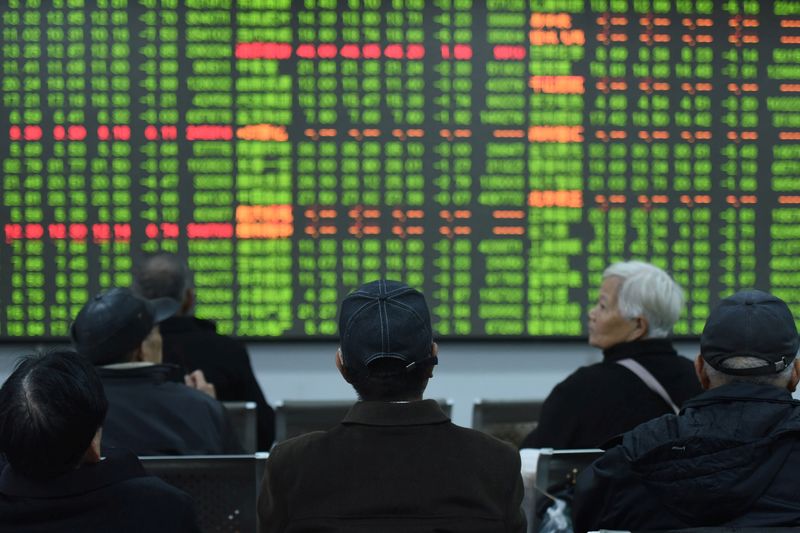SHANGHAI (Reuters) – Chinese investors are swapping their bets in equities for safe-haven money market funds (MMFs) as stock markets continue to be volatile on the back of concerns about domestic policy tightening and Sino-U.S. tensions.
The trend marks a reversal in the risk-seeking behaviour seen during March-June and has caused the country’s blue-chip index to pull back from its highest in more than five years.
(GRAPHIC – China’s major indexes had witnessed big swings since mid-July, prompting investors to seek shelter in money market funds: https://fingfx.thomsonreuters.com/gfx/buzz/azgpokzmlpd/China’s%20major%20indexes%20had%20witnessed%20big%20swings%20since%20mid-July.jpg)
MMFs are traditionally considered low-risk and liquid as they normally invest in high-quality assets, including government bonds, and yield is closely related to general cash conditions in the financial system.
Hwabao Tianyi ETF <511990.SS>, the largest money market ETF listed on the Shanghai Stock Exchange, saw its total units increase 35.6% to 968 million on Aug. 3, from 714 million on July 13 when the CSI300 blue-chip started to retreat from its five-year high.
Huatai-PB CSI 300 ETF <510300.SS>, the largest ETF tracking the blue-chip CSI300 index <.CSI300>, saw its total units decrease 17.9% to 7.8 billion on Aug. 3, from 9.5 billion on July 13.
“Some investors, in particular those heavily leveraged, want to exit the stock market for the moment given the big uncertainties around the Sino-U.S. tensions, and park their money in the money market funds,” said Zhang Chengyu, vice general manager of Beijing-based Shiji Hongfan Asset Management Co.
(GRAPHIC – China’s money market ETFs saw inflows since mid-July as investors pulled money out of equities on rising volatility: https://fingfx.thomsonreuters.com/gfx/buzz/nmovaldxxpa/China’s%20money%20market%20ETFs%20saw%20inflows%20since%20mid-July%20as%20investors%20pulled%20money%20out%20of%20equities%20on%20rising%20volatility.jpg)
China’s major indexes saw two sessions of big plunges on July 16 and July 24, as worries mounted over policy tightening, following better-than-expected GDP data in the second quarter, and over escalating Sino-U.S. tensions.
In July, the CSI300 and SSEC had both shed as much as 8% in their recent corrections, but they are up and 16.6% and 10.5% for the year, respectively.
(Reporting by Luoyan Liu and Andrew Galbraith, Editing by Vidya Ranganathan and Sherry Jacob-Phillips)






















